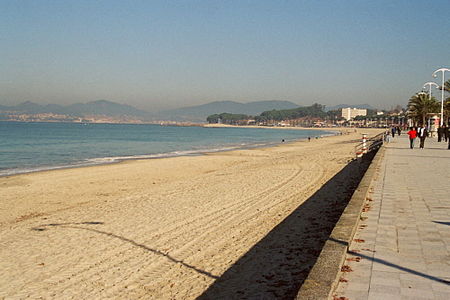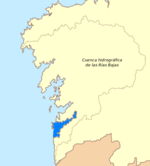Samil Beach

Samil Beach (Galician: Praia de Samil, Spanish: Playa de Samil) is the principal beach of Vigo in Galicia in north-west Spain. Located near the Cíes Islands, the mouth of the river Lagares is found at its west end. The beach is 1,700 metres (5,600 ft) long and is connected with the urban public transport, and disabled access is available during the summer. Several Vitrasa urban public transport lines connect it with different areas of the city. Those lines are: L10, C15A, C15B and C15C during the whole year, C3 during the summer, and the night lines CN1 and CN2. Around Samil, several services have been created: museums (such as "Museo do Mar" and "Verbum"), several catering premises, clubs and cafés. Its promenade covers the littoral zone and it offers several leisure facilities (three public swimming pools, garden areas, basketball courts, a mini-soccer court, tennis and paddle courts, a skating rink, and terraces).
Excerpt from the Wikipedia article Samil Beach (License: CC BY-SA 3.0, Authors, Images).Samil Beach
Vigo Navia
Geographical coordinates (GPS) Address Nearby Places Show on map
Geographical coordinates (GPS)
| Latitude | Longitude |
|---|---|
| N 42.21 ° | E -8.7763888888889 ° |
Address
36331 Vigo, Navia
Galicia, Spain
Open on Google Maps








